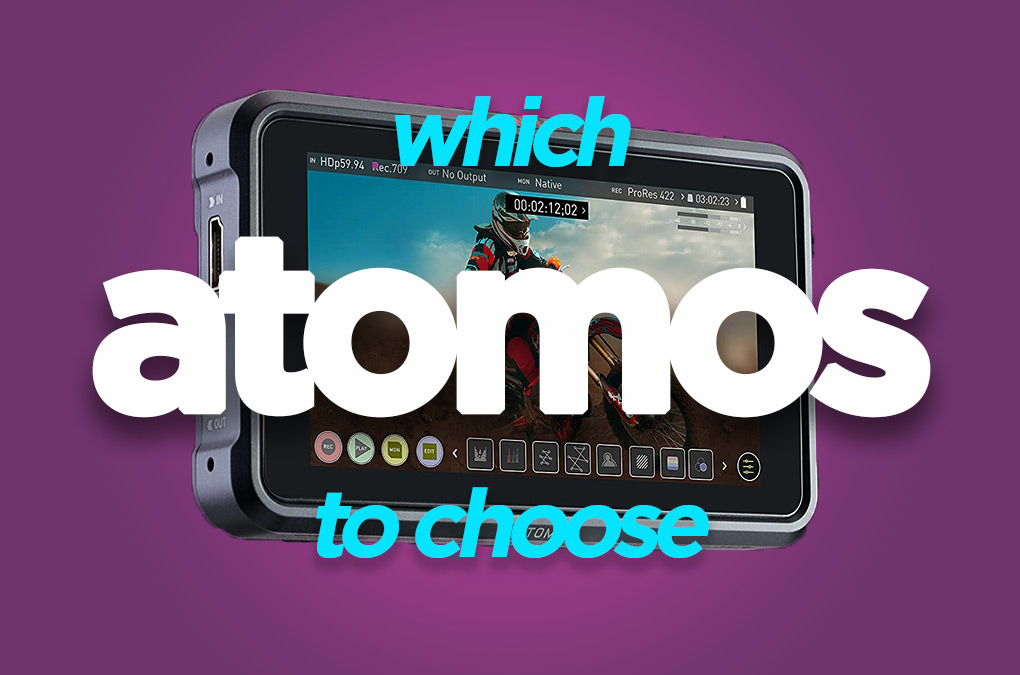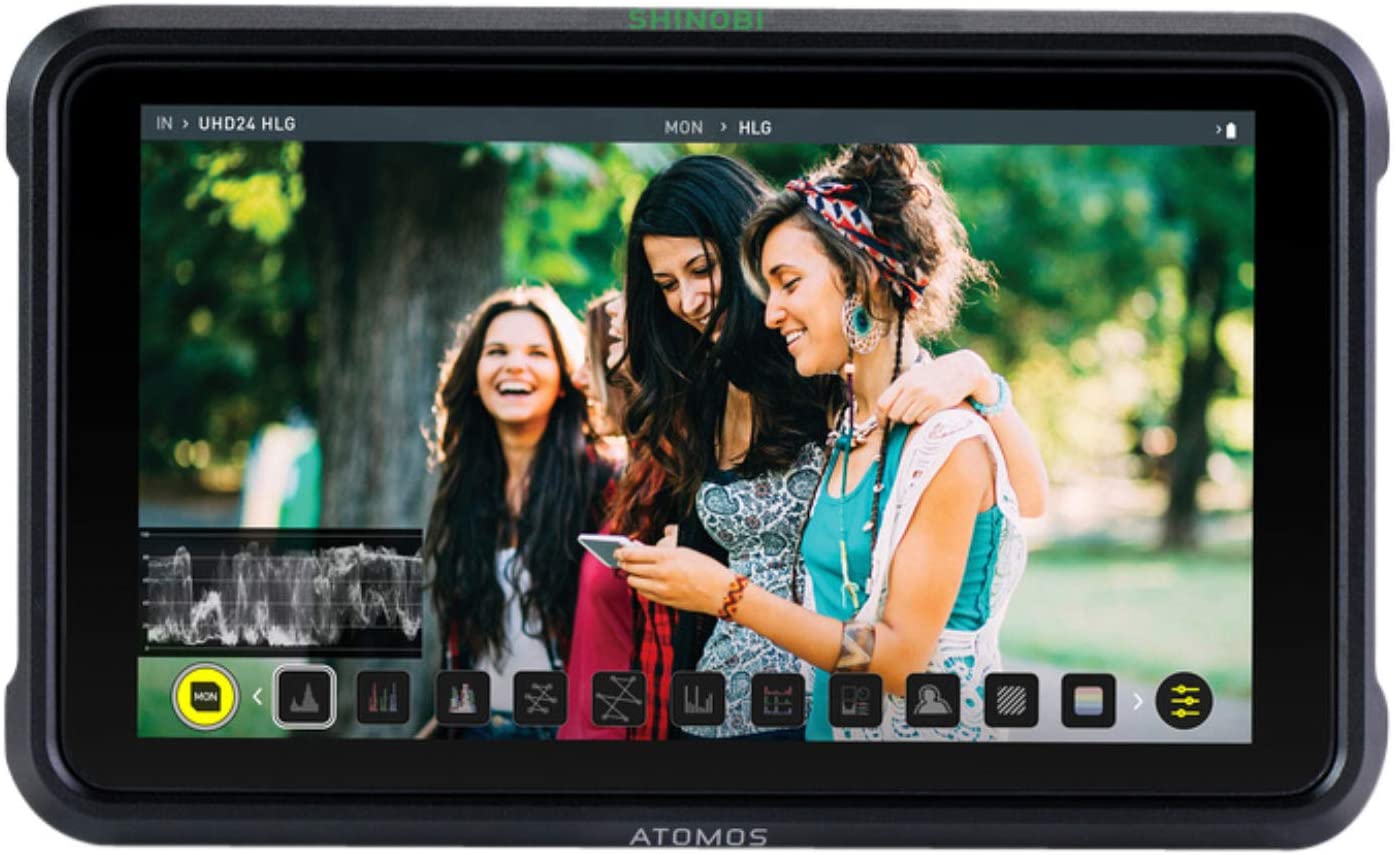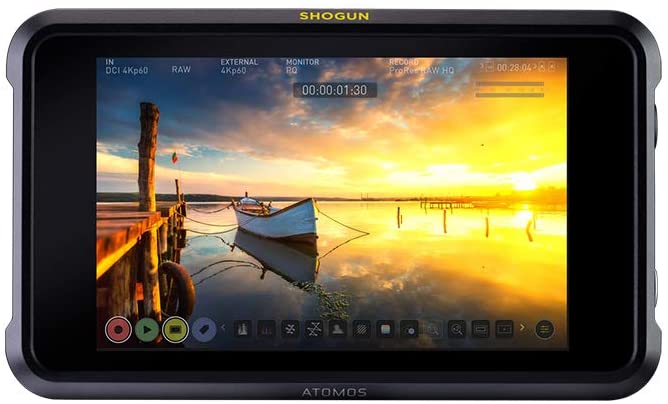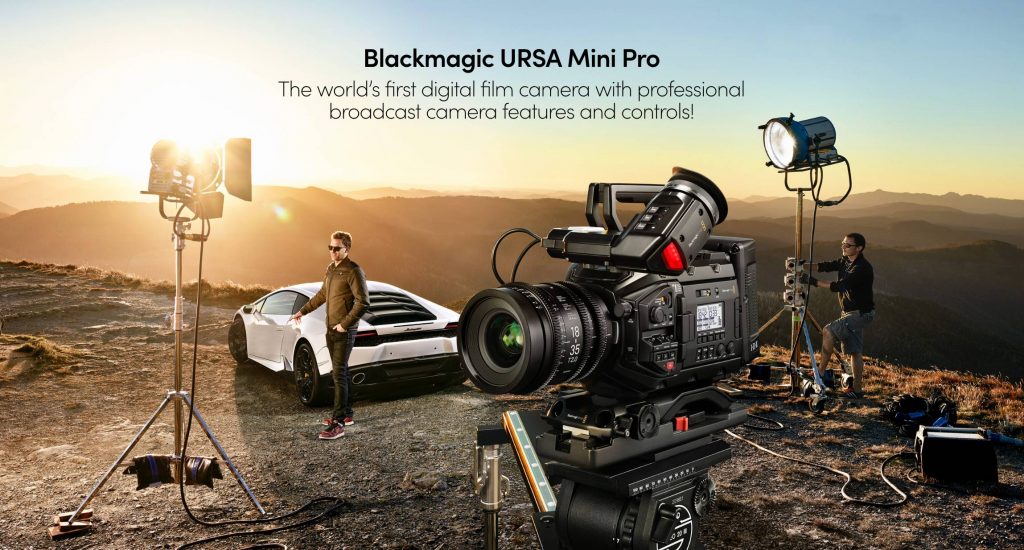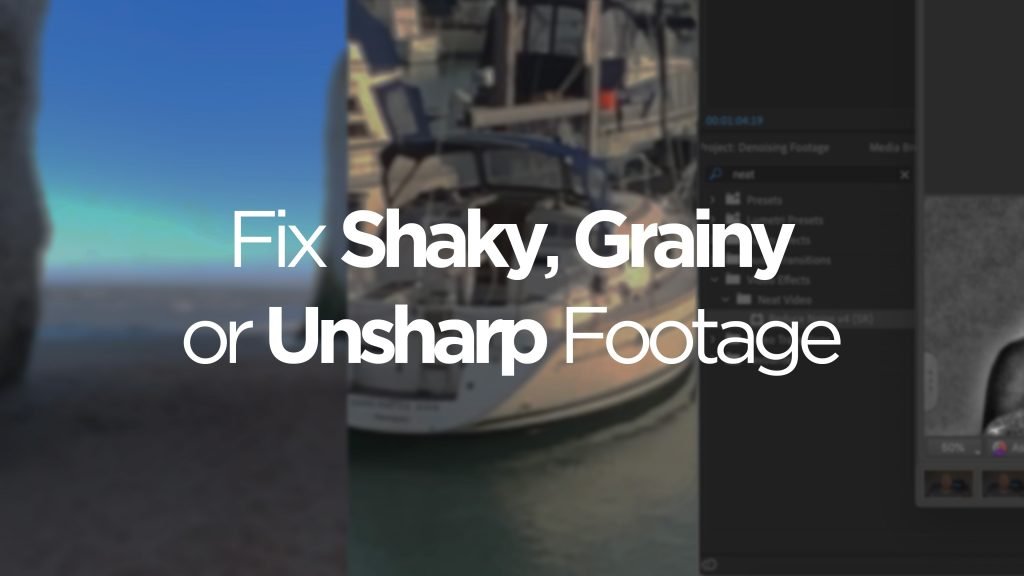Which Atomos monitor or recorder should you get for your production and your budget?
It can be a difficult decision. In this post I’ll run you through the various options Atomos offer and for which setup they are most suited to.
I’ve been using Atomos monitor/recorders (primarily recorders over monitors due to the nature of my work) for at least 5 years now. As a piece of technical equipment designed to do one particular job they are fantastic, they just work!
Their performance increases year on year and with the recent addition of ProRes RAW recording for DSLR cameras via HDMI on the Ninja V you really can’t beat them for shear power and size.
Let’s a dig a little deeper into Atomos, what they look like, which production setups they are built for and price range.
How do I know what I’m talking about? Head to the DigiProTips Experience and Background page to find out how I’ve built up my knowledge over a career spanning feature film, broadcast TV and digital content production.
Atomos

Atomos is an Australian brand born out of Melbourne just over 10 years ago. Their mission is, ‘to help creative professionals cut through technology barriers by creating easy to use, cutting-edge 4K and HD Apple ProRes monitor-recorders.’ And they certainly have achieved their goal in that time.
The reason why Atomos monitors are so well respected in their field is because of their care to detail. When it comes to making a quality product that is robust, durable and easy to use, they deliver on the promise they make.
From the get-go you feel like you instantly know how to operate an Atomos monitor, everything feels intuitive and easy to use. But that isn’t to say that these high-end external camera screens aren’t for more advanced users because they really do pack a punch, in terms of features. Atomos monitors now include, focus peaking, false colour, 3D luts, RGB parade, vectorscopes, media switching, 4K ProRes RAW recording straight to SSD and daylight balanced high contrast screens.
Note. Not all of these features are available on every model Atomos offers.
I’ve yet to come across another brand that offer so much from such a small package, that delivers on quality and durability.
The customer service offered by Atomos should also get a mention, often replacing units or repairing them free of charge, with evidence of receipt.
When Would You Need to Use Atomos Monitors/Recorders?
In my professional career I’ve mainly used Atomos monitors as backup recorders for large scale studio productions. I also regularly use them as colour calibrated monitors when in-the-field and I can’t rely on other monitors to accurately represent the colour balance of my cameras.
‘Once bitten twice shy’, is how the saying goes and that is exactly why when my production switcher’s internal recording functionality decided to fail on me mid-show, I knew I needed a backup solution. The switcher had an interesting fault, in that, I could still carry on switching between cameras to live output but the internal encoders had stopped recording entirely. By implementing an Atomos Shogun monitor as an external recording device via SDI I knew that I could, at the very least, continue to record the live output should it happen again, which it did!
Now, that’s just one very specific example of where an Atomos monitor has saved my bacon in a production environment but there are many, many other uses for them. And I have, in fact, used them for their intended purposes multiple times.
As any shooter is aware, the in-built camera screen of their camera is less than ideal in bright daylight. This is where Atomos monitors come into their own. With each unit being near or above 1000nits they are easy to see and use in broad daylight as external camera screens.
For DSLR shooters, not only do Atomos monitors act as external camera screens but they can now record the cameras direct sensor output in higher quality than the internal encoder of the camera body. The Atomos Ninja 5 being a prime example. It’s so small and so powerful that it has become one of the company’s best sellers, nearly overnight (slight exaggeration but it has been tremendously quick).
Atomos are even stepping into the media switching game with the Shogun 7 now offering live multicam switching for up to 4 SDI inputs, recording direct to SSD for you to be able to take the recording straight into an NLE and have synced footage or stream it out straight away to social media platforms.
So, Which Atomos Monitor/Recorder is Right For Me?
DISCLAIMER: This post may contain affiliate links. We make a small commission if you buy the products from these links (at no extra cost to you). As an Amazon Associate, I earn from qualifying purchases. But we only recommend products we would use ourselves. For more information, click here to see our disclosures.
Let’s start with the Atomos Shinobi.
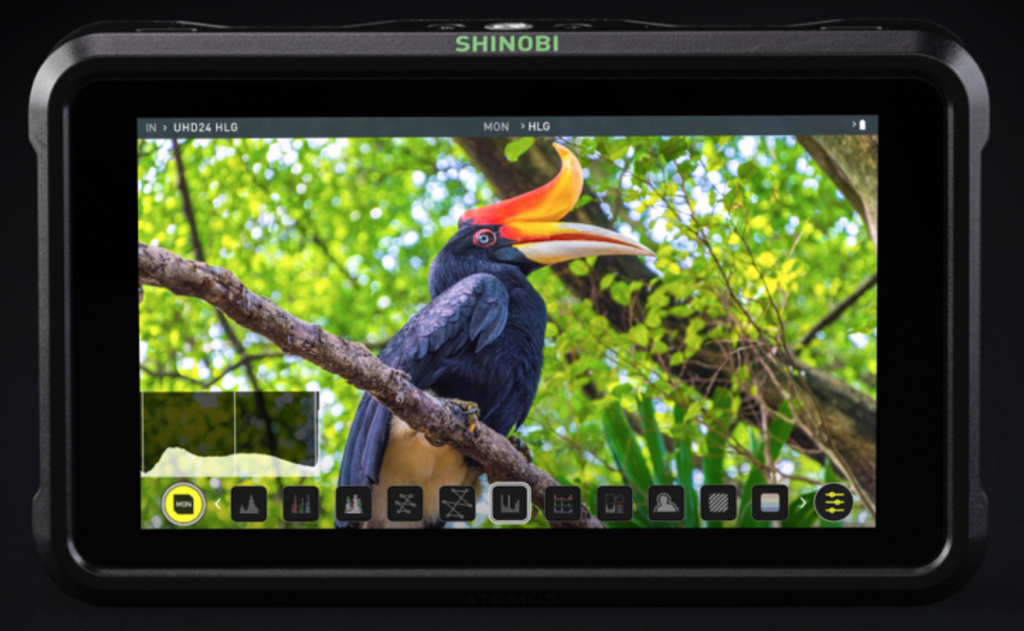
The smallest and cheapest of the Atomos monitor range, the Shinobi is purely a monitor and not a recorder. At 5 inches it is a good size for your kit bag and sits happily atop your camera body as an external camera screen.
The Atomos Shinobi has a 1000nit display for use in bright sunlight and can take up to a 4K 29.97fps input via HDMI. At HD it can show 59.94fps footage. It also comes in an SDI variety for cameras with SDI outputs.
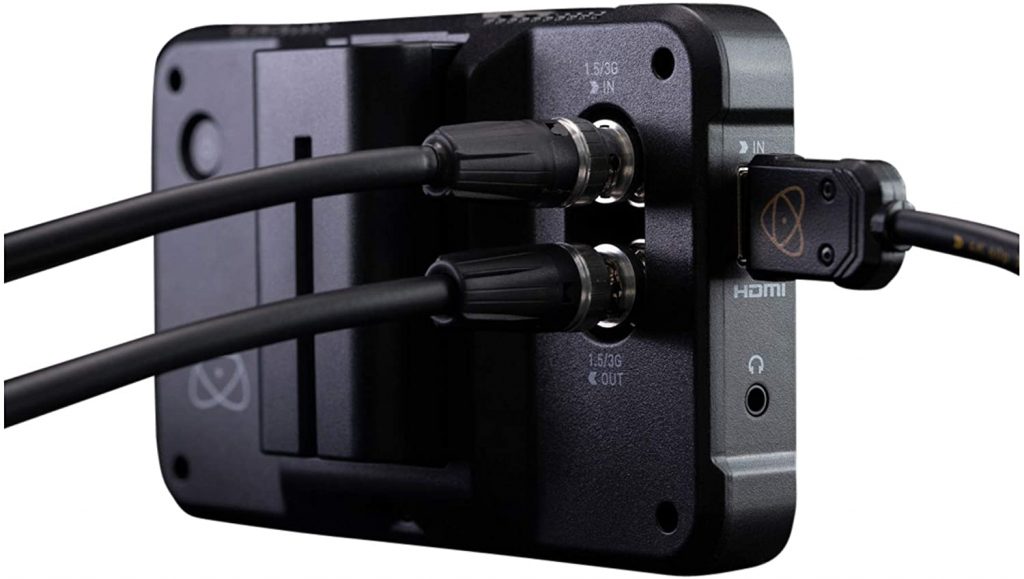
At 151 x 91.5 x 31.5mm in size and with up to 6hrs of battery life (12hrs on standby), when in constant use, this little Atomos monitor is a winner as another camera screen that is more visible in daylight. As with all Atomos monitors, the Shinobi is colour calibrated out of the box, so you know the image you are looking at is a true representation of the footage being recorded internally.
The Atomos Shinobi retails for only $299.
Atomos Ninja 5

As I mentioned above, the Atomos Ninja 5 is the new flagship monitor recorder from Atomos that has taken the DSLR market by storm.
Aimed primarily at videographers who shoot on DSLRs to capture their footage, Atomos have cornered a market in allowing far higher bit depth, framerate and colourspace recording than is capable in-body.
The Atomos Ninja 5 is only a 5 inch monitor but it houses the ability to record up to 4K 10-bit HDR, 4K 12-bit ProRes RAW, 4K 60fps and HD 240fps through an HDMI 2.0 connection capable of 12Gb/s transfer speeds. That is nothing short of remarkable.
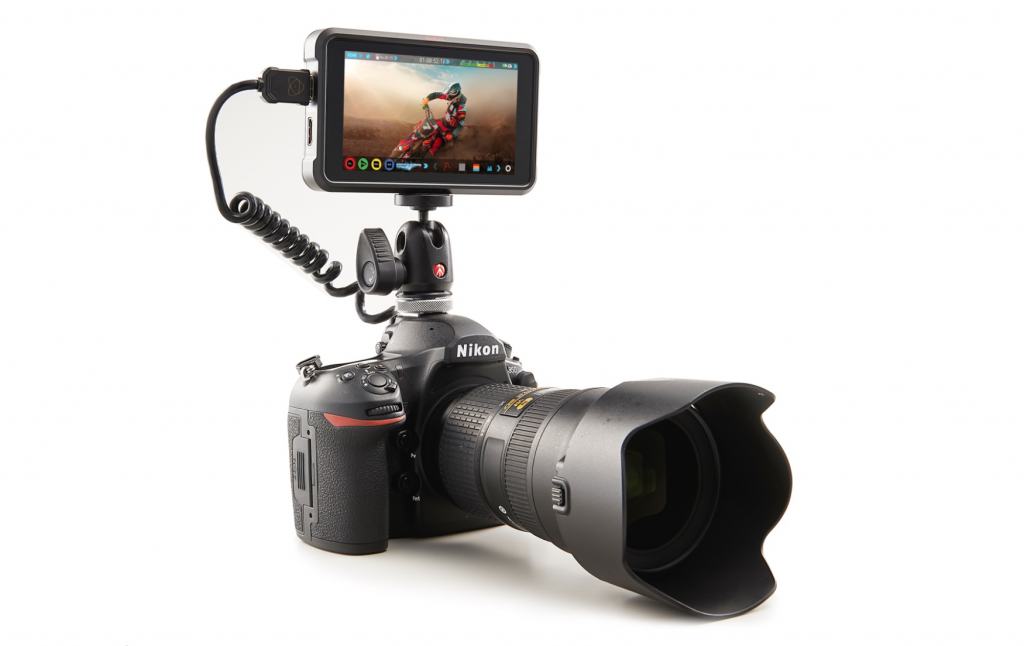
As well as all the above the unit also records direct to SSD so you can take that ProRes RAW 4K footage and bring it straight into your NLE by connecting up the SSD to your pc or laptop. Because of it’s form factor Atomos and Angelbird have developed a new type of SSD specifically for the Atomos Ninja 5, called the AtomX SSDmini. It’s 20% smaller than conventional SSD drives and has sustained read and write speeds of over 500MB/s.
If your DSLR has an uncompressed HDMI output then by using the Atomos Ninja 5 you are pretty much guaranteed to be able to record better footage than would be capable using the in-built encoder of the camera body. And it’s for this reason that videographers with slightly older camera bodies are choosing to pop an Atomos Ninja 5 on top of their camera rather than fork out for a new camera body.
The Atomos Ninja 5 retails for $599.

Eliminate your camera’s internal compression and time limits – record up to 4K 10-bit HDR video direct from your camera's sensor over HDMI 2.0. Record 4K 12-bit RAW with enabled cameras. And when you’re done, your edit-ready ProRes, ProRes RAW and DNxHR recordings are stored on affordable SSD drives.
Atomos Shogun 7

The Atomos Shogun 7 is the newer, better, brother of the Shogun Inferno, which used to be my go-to of the Atomos monitor range.
Yes the Shoguns are bigger than the Atomos Ninja 5 but they pack a whole lot more into that size!
The Shogun 7 is a 7 inch HDR Pro/Cinema Monitor-Recorder-Switcher. That last part is intriguing isn’t it? The Shogun 7 can now act as live multi-cam SDI switcher, recording 4 separate SDI ISOs and one a further recording of the mixed feed from the switcher. This can then be used to stream out live or be brought straight into an NLE to edit further, all in perfect sync with each other!
The Atomos Shogun 7 has an incredible 1,000,000:1 contract ratio and a peak brightness of 3000nits. Surpassing the levels of the Ninja 5, Shinobi and the Sumo19 below.
It takes regular SSD sata drives and can record at up to 5.7K Apple ProRes RAW (depending on your camera output). You can also record RAW at up to HDp240 for slow-motion footage.
For the perfectionist shooter (which we all strive to be), the Atomos Shogun 7 has the ability to load custom 3D LUTs, show false color profiles, it has adjustable focus peaking and movable 1:1 and 2:1 pixel magnification. In addition to all that, it features an RGB parade and vectorscope to ensure perfect color representation.
The reason I like using the Shogun Inferno so much is because of how easy it is to use. I use it as a backup device for my live multi-cam media switcher, I use it as a confidence monitor on set, I use it to record console gameplay and I use it to record amazingly detailed ProRes RAW footage from my cameras. The great part about all of these uses are that after I hit stop on the Shogun, all I need to do is remove the SSD drive and plug it into my computer to start editing that footage straight away (well, actually I store it on my 10GbE connected NAS and edit direct from the NAS. For more information on high-speed network storage mediums check out this article.)

The Atomos Shogun 7, for me, is the ideal Atomos monitor for digital video professionals of all levels. It is so versatile and can be used with practically any camera, console, media switcher or basically anything capable of outputting a video signal over SDI or HDMI.
At $1299 it’s not cheap but what you get for your money is well worth the investment!
Atomos Sumo19
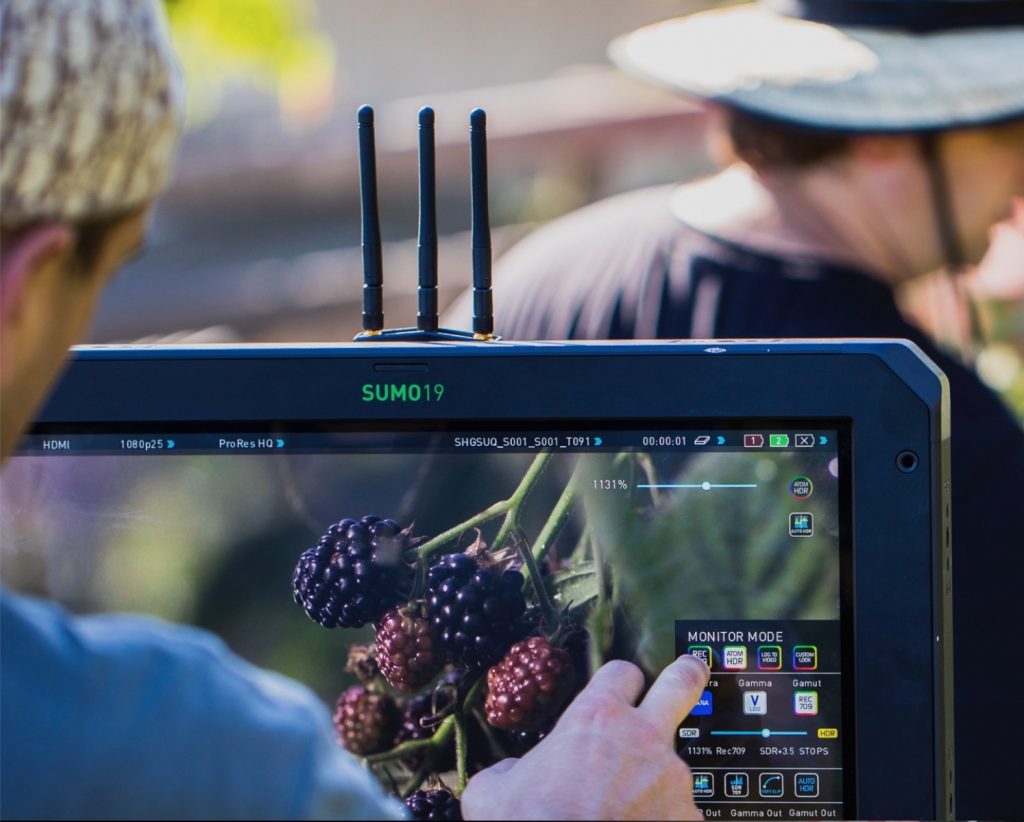
Now, the Atomos Sumo19 doesn’t really fall into the category of external camera screens/monitors but I wanted to include it here because it is a fantastic piece of kit for Cinematographers/DOPs/Directors and just generally, as an excellent confidence monitor, that has the ability to record and switch cameras live.
Essentially what you are looking at is a much bigger version of the Shogun 7, in fact the Atomos Sumo19 comes in at a whopping 19 inches of screen real estate. That is more than enough screen for any set field monitor. And at upto 1200nits of 1080p daylight viewable image quality you aren’t going to miss a beat.
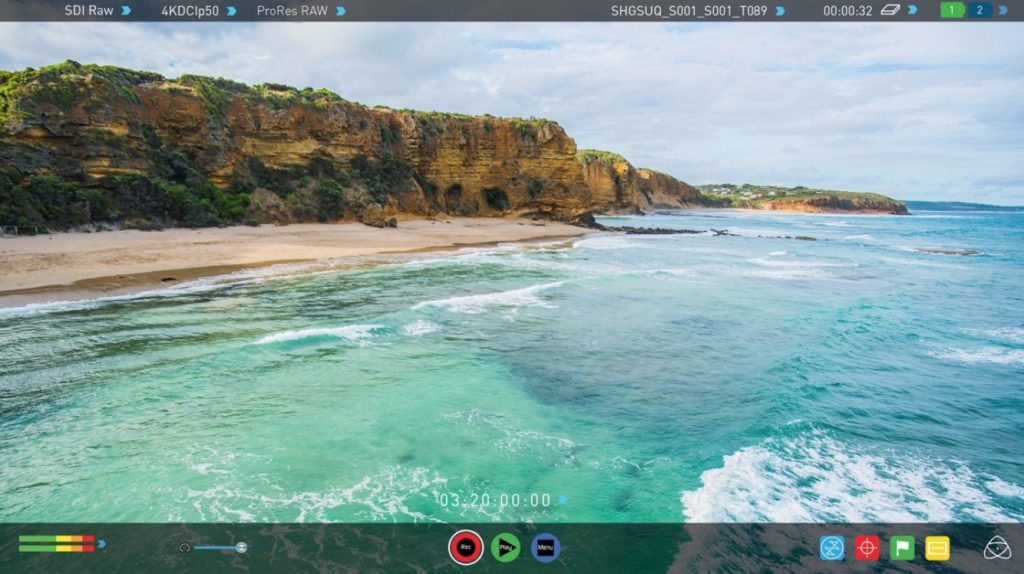
The Atomos Sumo19 is very much aimed at ‘performance monitoring’ with the ability to take “the RAW/Log/PQ/HLG output from cameras or games consoles and precisely maps to display 10+ stops of dynamic range in real time. Use as a director or client monitor in the field, or an affordable HDR studio monitor.”
The Sumo19 can record up to 10-bit 4:2:2 in ProRes or DNxHR codecs at 4Kp60 or 2Kp240, depending on the camera’s capability. The depth and quality of the image is also preserved with data rates of up to 1.8Gbs.
It takes dual V-Lock or Anton Bauer batteries and can instantly swap between them so you never lose power.
The Sumo19 is aimed at on-set professionals and the budget is reflective of that, retailing at $1,995.
There’s an Atomos Monitor for Everyone
Hopefully my round up of the best Atomos sellers gives you a better indication of the correct monitor for your needs and budget. They really are value for money and I wouldn’t feel comfortable saying that if I didn’t have experience using them myself.
My personal preference would be for the Atomos Ninja 5 for DSLR users and the Atomos Shogun 7 for high-performance cameras. The price range and versatility of those two products far outweigh the others in those classes.
For more shooting tips check out my post on the best 3 lens combo for videographers:

DigiProTips

